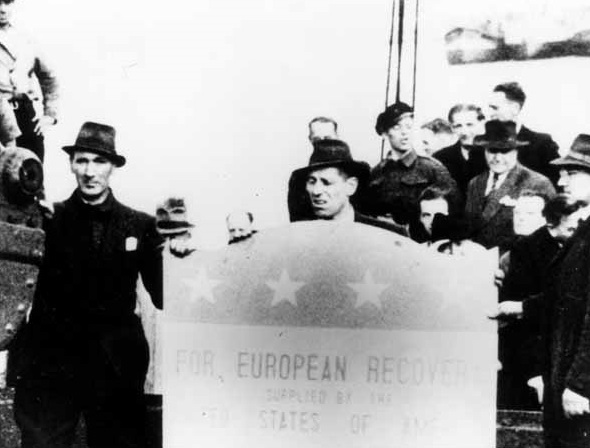
Background
The Cold War was mostly fought with words and threats rather than violent acts. The two nations at war were the United States and the Soviet Union. Although the two superpowers had worked as allies to defeat Germany during World War II, tensions grew between them after the war, resulting in a standoff over competing visions for the post-war world. After the war, it became clear that Stalin was interested in expanding Russia’s power into Eastern Europe, while the U.S. feared that Russia was planning to take over the world and spread the political idea of Communism.
Truman’s response to the Soviet Union’s sphere of influence and current conditions of war-torn Europe would become known as the Truman Doctrine. This doctrine proposed to give aid to countries that were suffering from the aftermath of World War II and threatened by Soviet oppression. The U.S. was especially concerned about Greece and Turkey.
Due to the slow progress of Europe’s economic development following WWII, Truman devised another plan to offer aid called the Marshall Plan. The plan was named after Secretary of State George Marshall due to Truman’s respect for his military achievements. Truman hoped that by enacting the Marshall Plan two main goals would be accomplished. These goals were:
- It would lead to the recovery of production abroad, which was essential both to a vigorous democracy and to a peace founded on democracy and freedom, and which, in the eyes of the United States, the Soviet Union had thus far prevented.
- It would support world trade, from which U.S. businessmen, farmers, and workers could benefit.
Truman also stressed the humanitarian intent behind aiding Europe’s war-torn countries. The Marshall Plan was estimated to cost the United States approximately $22 billion, but it was later scaled down to cost $13 billion after the plan was put into action. Secretary of State George Marshall presented the plan at Harvard University in June 1947, and it was met with acceptance by military leaders and political advisors.
Although the idea behind developing the Marshall Plan had good intentions of offering aid to people in postwar Europe, however, some people did not receive the Marshall Plan with the same perception as Harry S. Truman.
Key Question
Did the Marshall Plan make the Cold War colder?
Materials
Documents to be examined:
- Letter from Harry S. Truman to Eleanor Roosevelt, March 16, 1948
- Letter from Eleanor Roosevelt to Harry S. Truman, February 27, 1947
- “Can He Block It?” Political Cartoon, ca. 1947
- “Thanking America,” June 5, 1972
- CNN's Cold War, Episode 3: Marshall Plan, 1947-1952, March 9, 2015
- Letter from Harry S. Truman to Bess W. Truman, September 30, 1947
- Marshall Plan Map - Library of Congress website (see Background Essay)
- Cold War Timeline - History on the Net website (see Background Essay)